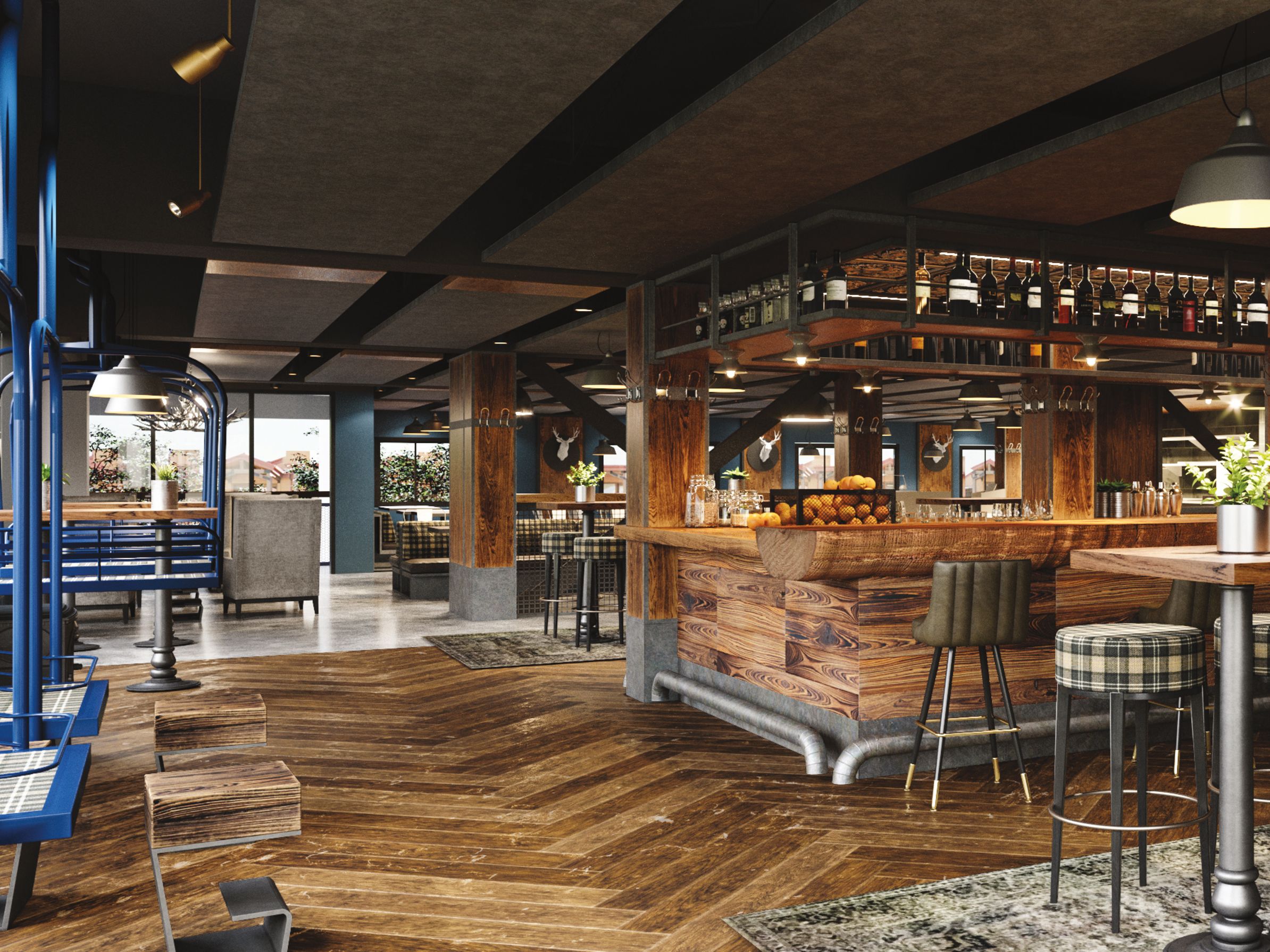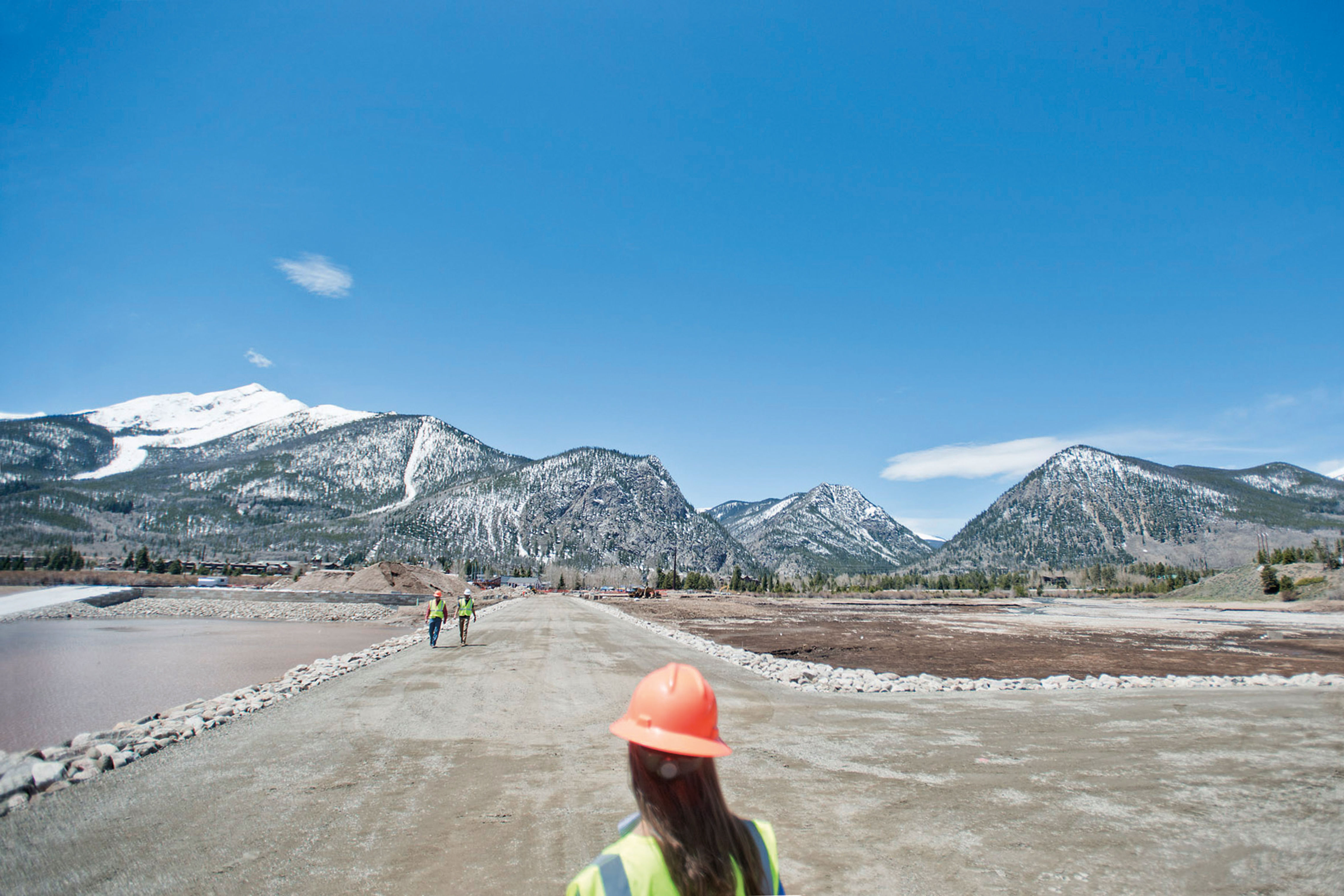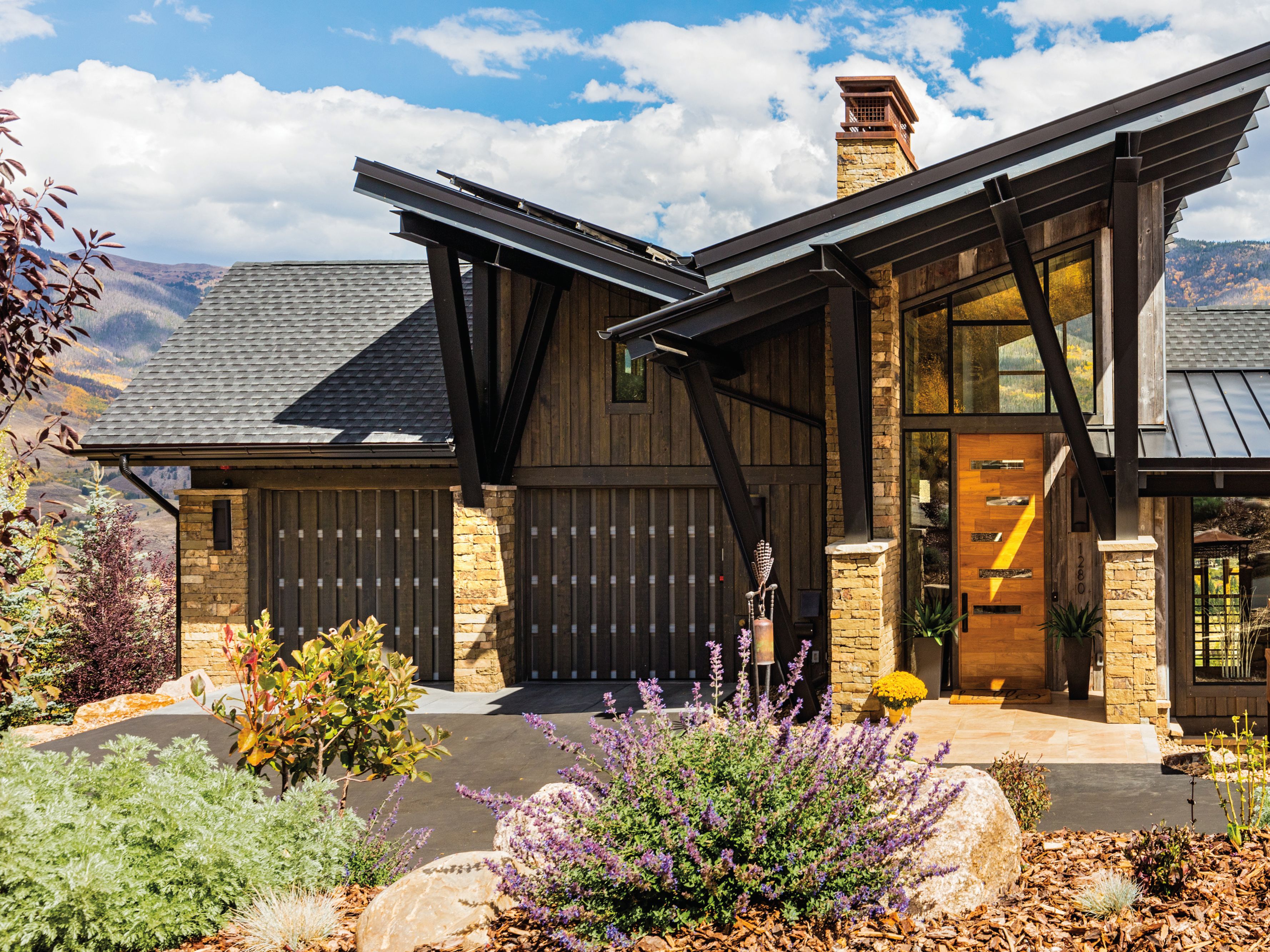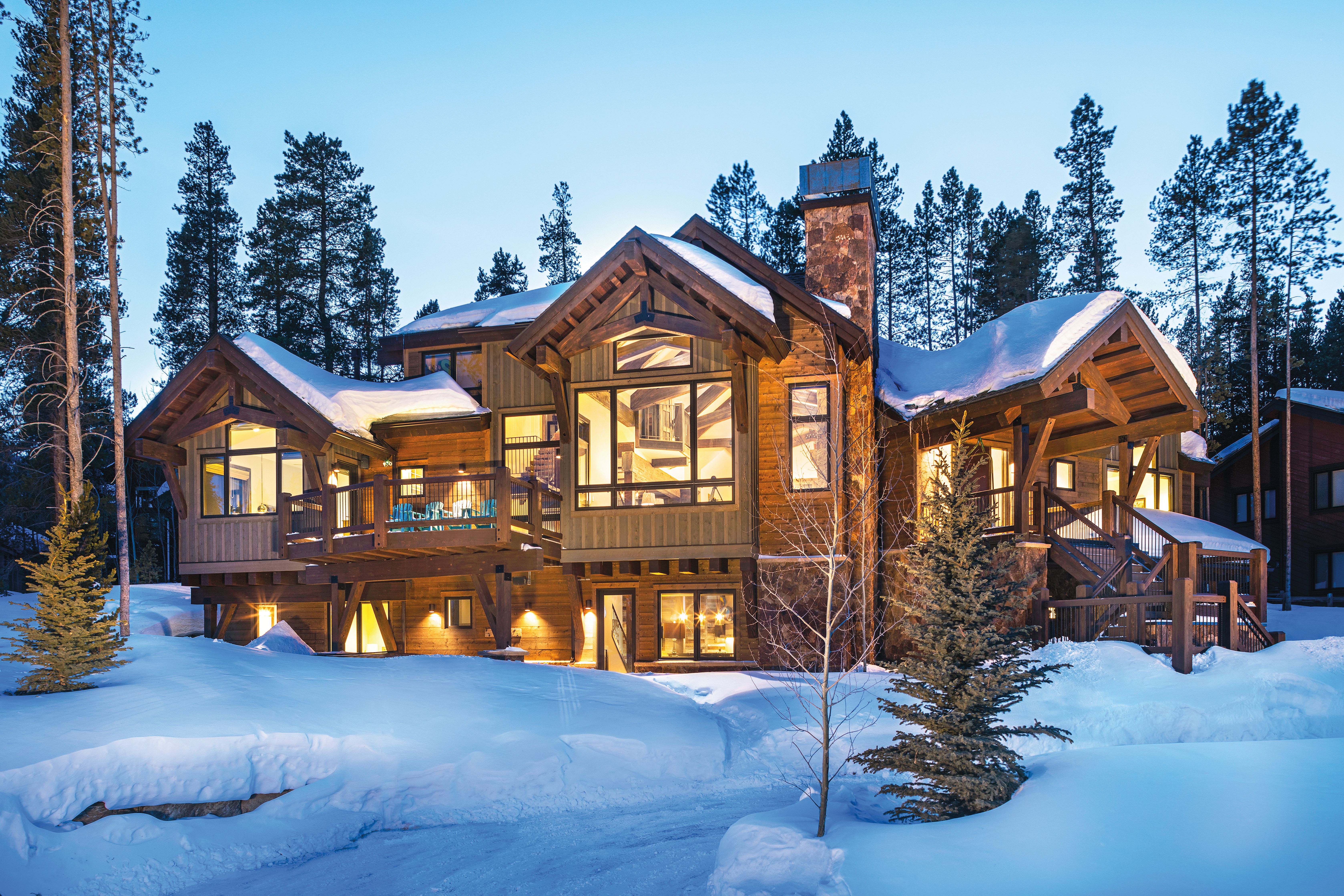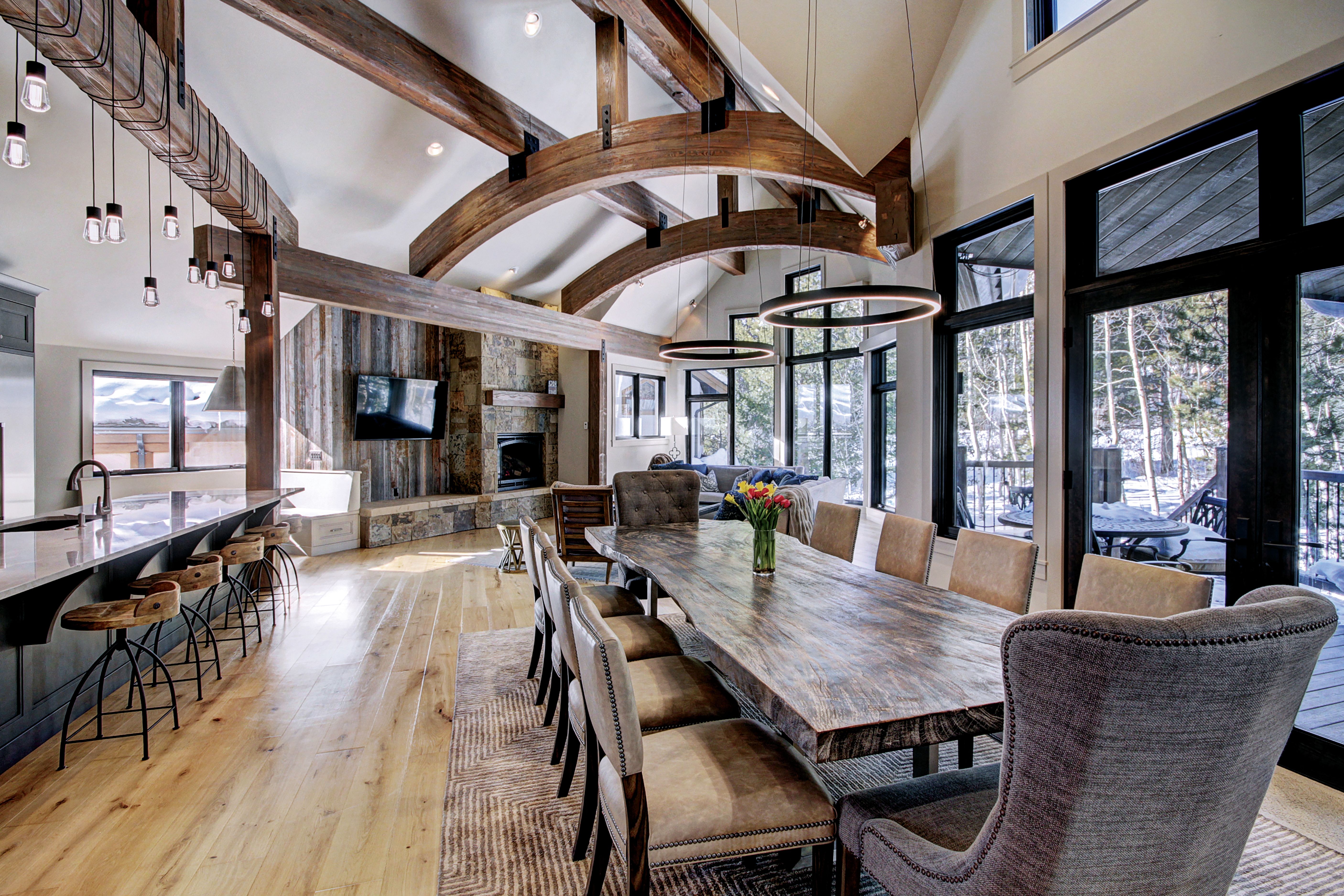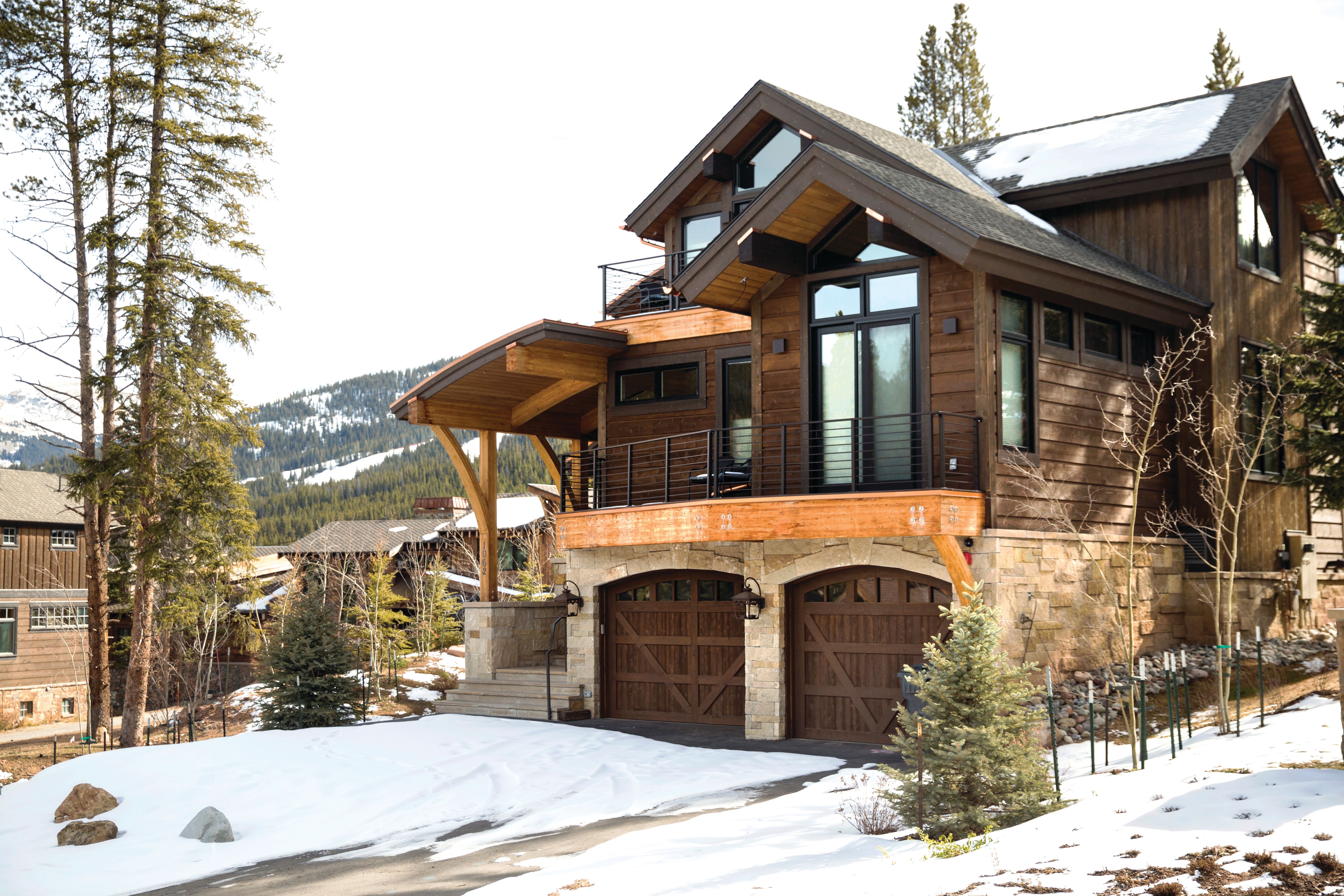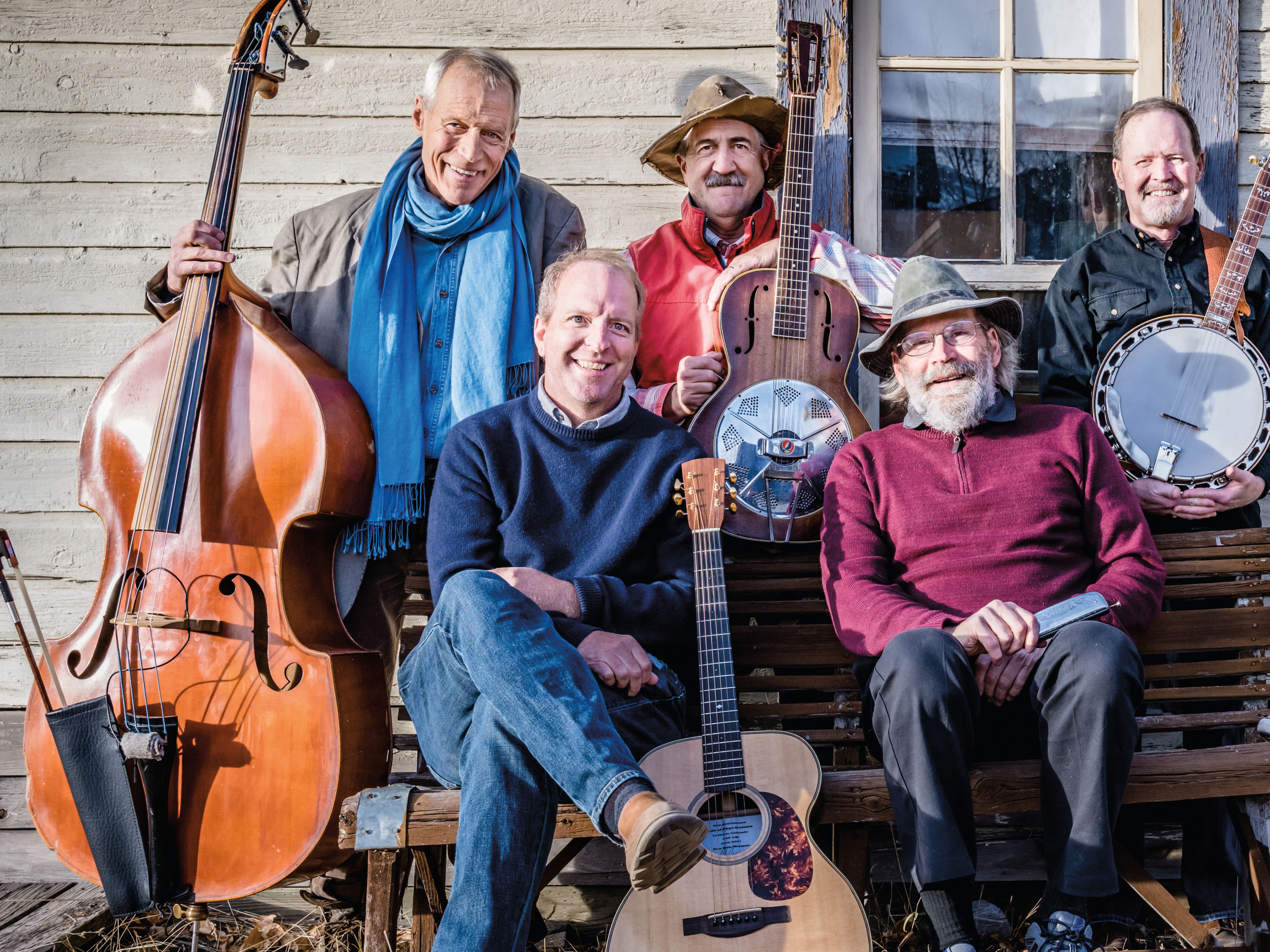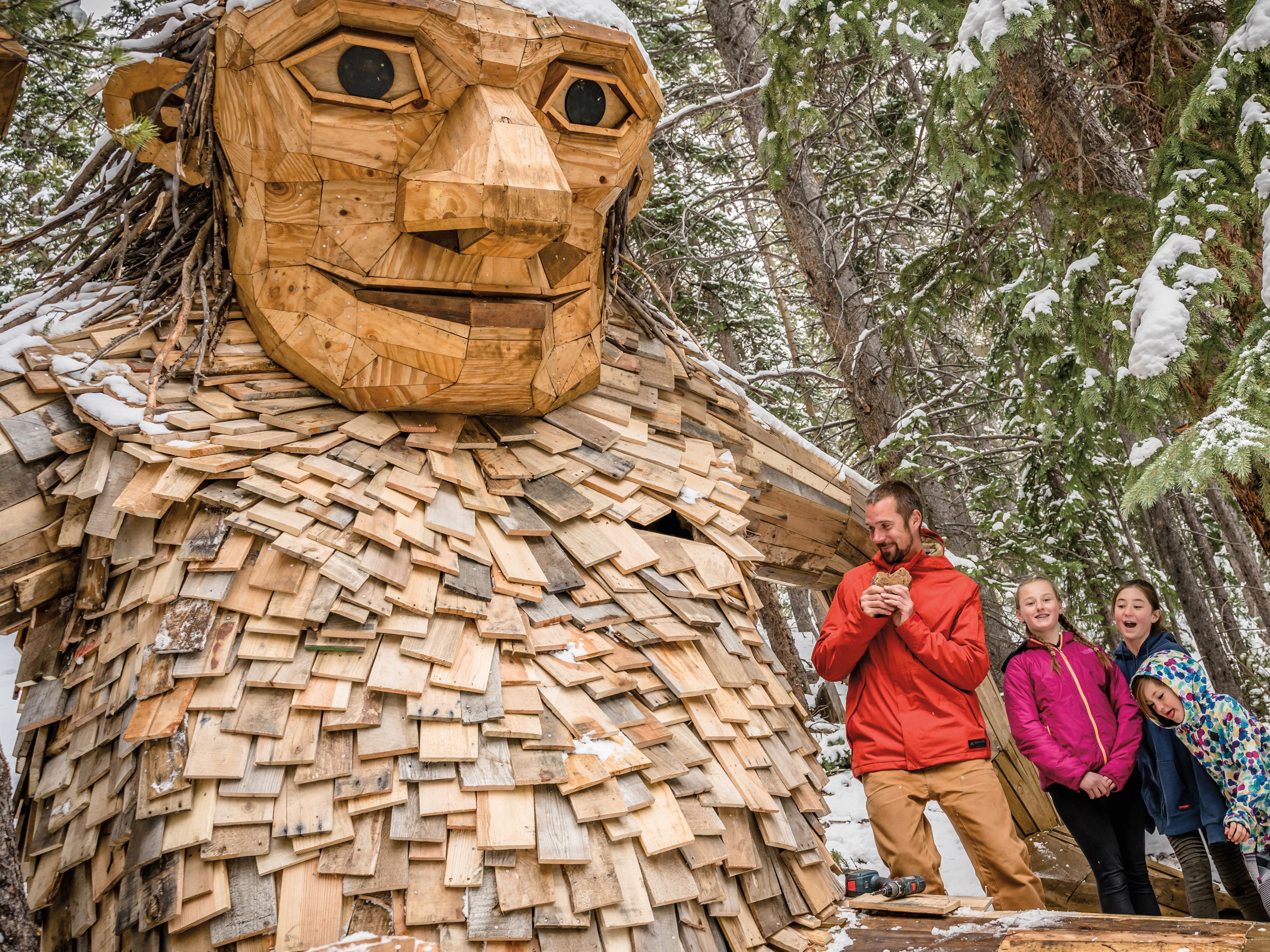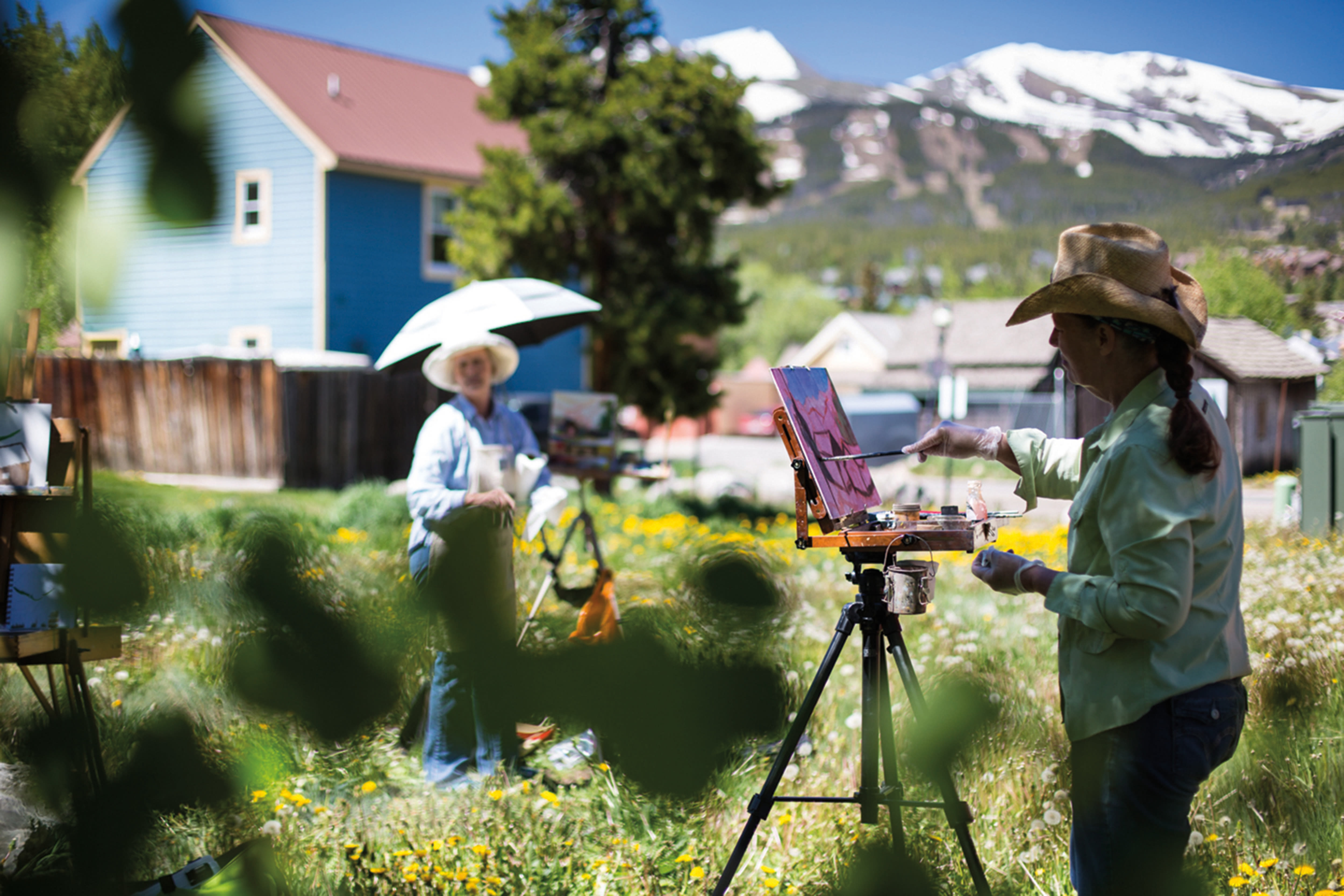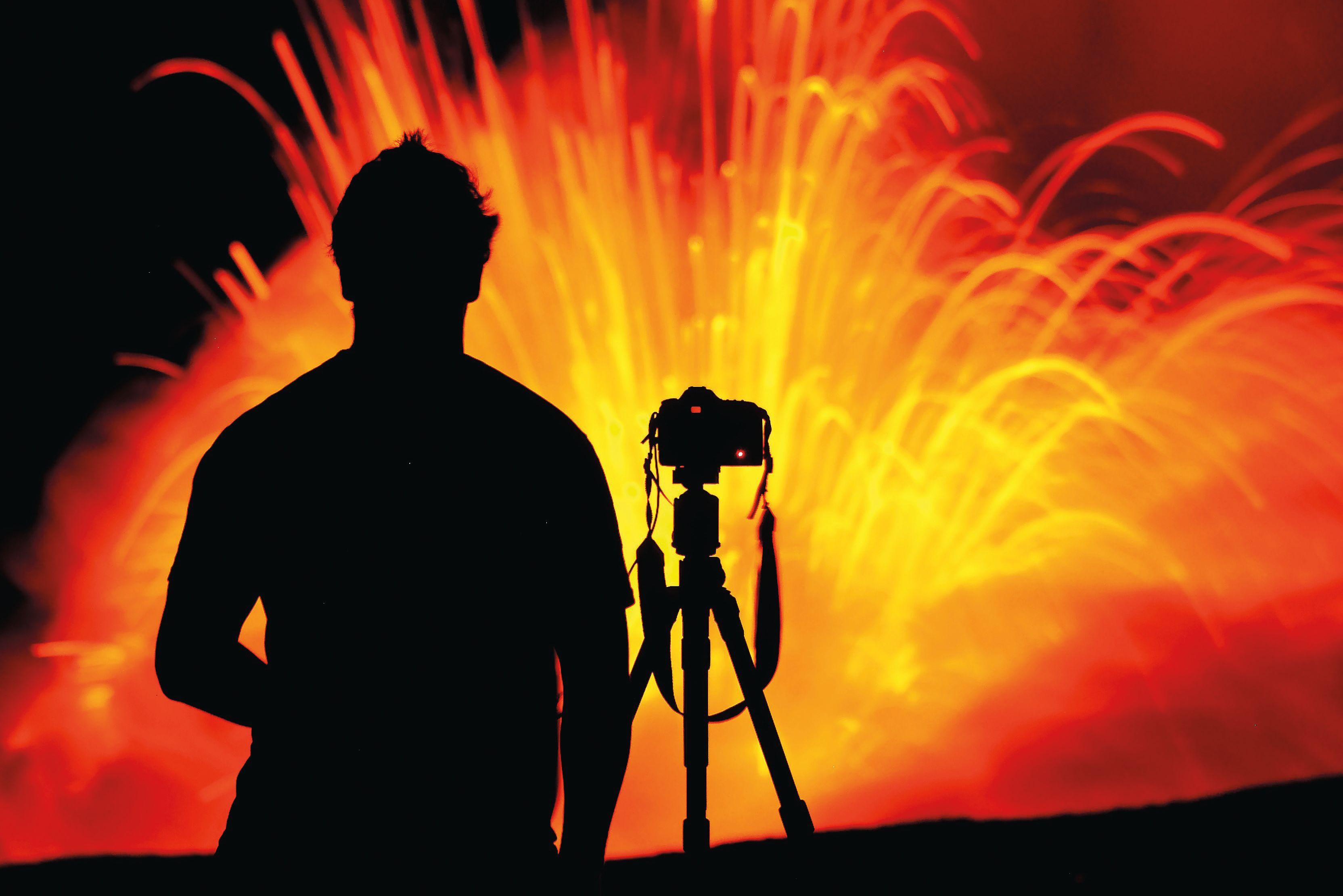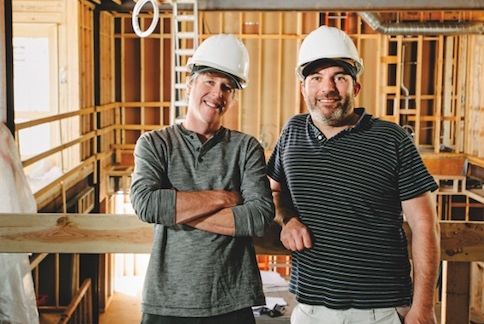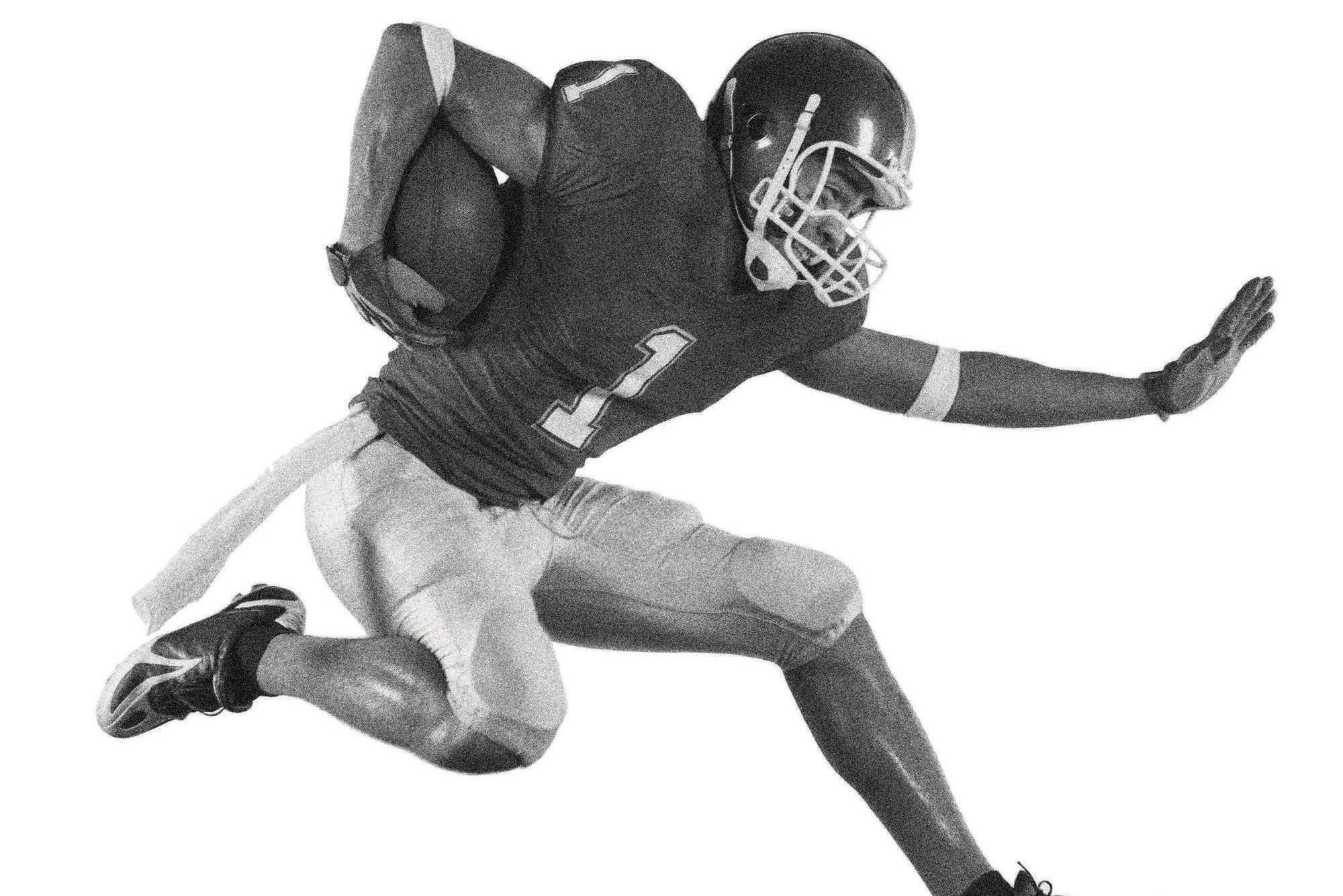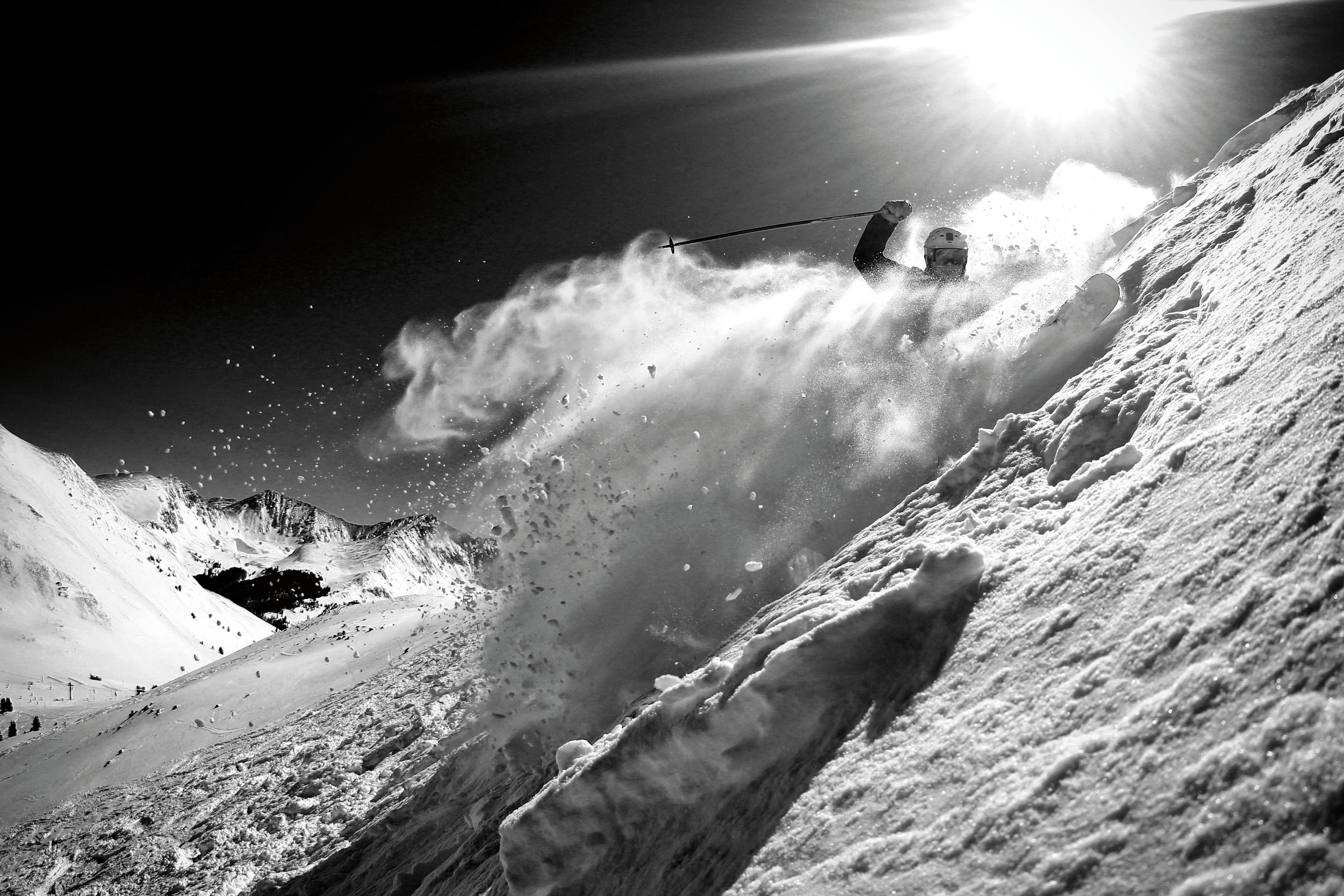
Article
Heaven Above
The insider’s guide to finding above-tree-line bliss at every resort. Don’t leave earth without it!
It is no coincidence that Breckenridge Ski Resort’s long-in-the-works Peak 6 expansion, set to open this winter, includes a heaping dose of above-tree-line terrain—478 of the 543 new skiable acres. After all, no trait unites Summit County’s four ski resorts and neighboring Loveland more than the wealth of free-reign terrain above the elevation where trees grow, which is roughly 11,800 to 12,000 feet in Colorado. Between Breckenridge, Copper, Keystone, Arapahoe Basin, and Loveland, Summit skiers and snowboarders have access to 5,021 skiable acres of above-tree-line terrain within a twenty-minute drive.
Our altitude also affords us the country’s longest ski season and a sense of freedom unto itself. Whizzing through glades on a powder day is a rush; charging steep, open bowls at 13,000 feet is another sensation entirely. This is what distinguishes Summit, not just in Colorado but around the skiing world, where only a fraction of resorts are situated high enough to offer runs above timberline. Whether lapping the continent’s highest chairlift at Breckenridge, porpoising through powder off the Continental Divide at Loveland, or maching down the East Wall on a spring day at A-Basin, the feeling is the same. You’re releasing yourself from life’s tethers.
Without trees, your only obstacles are rocks. And in a deep winter, even the rocks disappear. This leaves just you and an ocean of white. Flat light can be a problem on cloudy days; if you’ve never experienced vertigo, it doesn’t take long to forget which way is up and which way is down on a milky morning above tree line. But when you combine a bluebird sky with deep powder, you can spend an entire day above tree line charged by an adrenaline flow that never wanes. What follows is a tribute to that rarefied sensation—and how to discover it yourself at each of our local ski areas.
Breckenridge
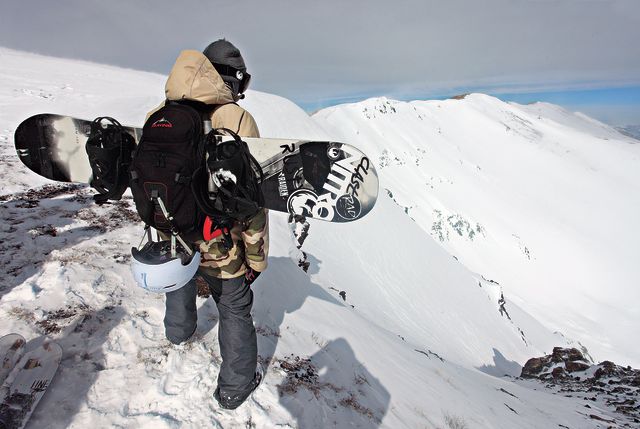
Starting this winter, all but 143 of the 543 acres on Breck’s Peak 6 will be accessible by chairlift.
Image: Tripp Fay
Classic Whale’s Tail
Longest Magic Carpet
Sleeper Lake Chutes
Above-tree-line skiable acres 1,539
In many respects, the Tenmile Range is the ideal geologic formation for a ski resort. The entire leeward side collects fresh snow whenever the wind blows (i.e., daily), loading a mix of fat bowls, low-angle trees, and steep alpine cirques. This is especially true under Breckenridge Ski Resort’s now-expanded ridgeline. The addition of Peak 6 boosts an above-tree-line bounty that already includes the Lake Chutes, Whale’s Tail, Imperial Bowl, the giant Peak 7 face, Horseshoe Bowl, and the nearly forgotten Next Big Thing of 2007, Snow White. Any one of these would be the premier run at a host of US resorts; at Breck, they help make the terrain even greater than the sum of its parts.
“The alpine stuff is my favorite place to ski,” says Rick “the Pup” Ascher, who is entering his thirty-fifth winter at Breckenridge and owns Pup’s Glide Shop on Ski Hill Road. “The powder days are fun, but what makes it really great are the days before and after the storm when the wind blows in. A couple inches of snow can turn into some deep days from the wind.”
Ascher swears by the wide-open and fast Magic Carpet ridgeline to Art’s Bowl combo, which is accessed, like most high-altitude runs at Breckenridge, from the Imperial Express, the highest chairlift in North America. “You don’t have to turn where you don’t want to turn,” he says. “You can make windshield-wiper turns if you want, or you can make three turns. It’s like surfing a big old wave, leaving rooster tails the whole way down.”
Breckenridge isn’t known for its steepness, but in the Lake Chutes—a series of cliffy, 500-foot pitches in excess of 50 degrees—you can “get puckered up,” as Ascher puts it. If you don’t believe that, ask a local for directions to Zero Chute, Crazy Ivan’s, or Wacky Tim’s, and stand on the cornice above their entries. When you take the plunge, your stomach hits your throat as if you were dropping into an elevator shaft.
Copper Mountain

Soaring above the clouds—and crowds—on Copper Mountain’s
Union Peak
Image: Nate Zeman
Classic Union Peak Bowl
Longest Cornice Chute
Sleeper The Taco
Above-tree-line skiable acres 1,000
Seth Morrison, among the greatest big-mountain skiers in history, first skied Copper Mountain in 1993. He still remembers the highlight of that day: hitting the Onion Roll jump at the bottom of Union Peak Bowl, which offers arguably the best value for high-alpine powder turns at Summit’s westernmost resort. “Natural terrain jumps was all we had back then,” Morrison recalls. “I like things like that.”
In addition to Union, Copper’s above-tree-line prizes include Spaulding Bowl, Copper Bowl, and Tucker Mountain. Morrison, a longtime Frisco resident, has always held a soft spot for the high-altitude runs just up the canyon from his home, thanks to “the views you get, being able to pick out fourteeners in the surrounding area,” he says. “And you’re not obstructed with too many obstacles, so you can open it up and go fast.”
A good thing is about to get better, too. Copper recently announced a multiyear capital improvement project called “The 12’s”—a string of major upgrades to the resort’s three peaks above 12,000 feet. This year, skiers and snowboarders get a new T-bar where the Storm King platter has operated for twenty-eight years, a move that will double the capacity up to Spaulding Bowl. And a surface lift named Celebrity Ridge is set to debut from the top of the Sierra chair to Union Peak and the Copper Bowl cornice, replacing a hike and adding runs to your day.
In Phase 2, the resort plans to add lift service to Tucker Mountain, which is currently accessed by a roundabout hike or free snowcat ride, and can’t be lapped. Despite being home to Copper’s best steep, north-facing terrain, Tucker rarely gets skied because it’s so hard to get to. If you do make it over, don’t miss the Taco, which begins above tree line and funnels into a steep chute near the bottom.
Spaulding is probably the most reliable and exhilarating alpine bowl at Copper, but after a cold and dry wintry morning, Copper Bowl may hold fresh snow later in the day. Check out Matchless for a classic run under the Mountain Chief lift, or Bradley’s Plunge if you’re feeling frisky and want some rocky surroundings.
Loveland
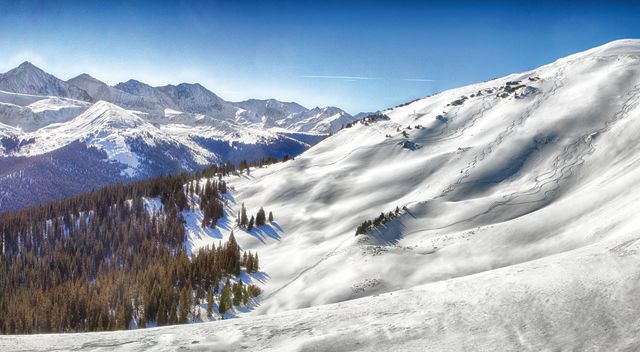
Copper Mountain’s Union Peak Bowl offers the best value for high-alpine powder turns at Summit’s westernmost resort.
Image: Tripp Fay
Classic Patrol Bowl
Longest Marmot
Sleeper Wild Child
Above-tree-line skiable acres 1,152
Anyone who has spent time at Loveland Ski Area knows about “the Ridge.” A long, curvy, north-south crest soaring just above 13,000 feet, the Ridge marks the resort’s western boundary and, as a section of the Continental Divide, separates the Atlantic and Pacific watersheds. That’s the technical speak, anyway: for skiers and snowboarders who like deep powder, the Ridge is like a pot of gold at the end of a rainbow.
Thanks to its geographic orientation, virtually every wind direction loads the Ridge runs with ample fresh snow. On a day with predominant northwest wind, head to southeast-facing runs like Supernova. If the wind is blowing from the southwest, beeline to the skier’s right side of Super Bowl. “I just follow the wind,” says pro skier and Loveland Freeride Team coach Doug Evans. “With the amount of terrain up there, people really get spread out. Everyone has their favorite runs, and they work their way around the mountain. And usually the wind just keeps refilling everything.”
Loveland’s alpine runs aren’t the longest you’re going to find in Colorado. But on the bright side, neither are the lift lines. Thanks to the vastness of above-tree-line terrain, which includes 64 percent of the resort’s acreage, it often feels like you’re skiing on a glacier in the Alps. As such, the 76-year-old ski area attracts a hardy bunch of devotees who appreciate high alpine snow. Feel like testing yourself on rock-lined chutes? Take a right off of Chair 9 and hop in the free (really!) snowcat for a ride to Marmot and the Rock Chutes, tucked away in the resort’s northwest corner. Don’t mind a little hike? Hoof it to Wild Child, one of the longest above-treeline runs at Loveland and a sure bet for midday powder turns.
In general, trending south off of Chair 9 allows you to lap the Ridge without sacrificing an extra lift ride. If you venture north toward Marmot and the multipitch Rock Chutes, you’ll end up taking two rides to get back to the top. Not that that matters, given the uncrowded slopes and laid-back vibe. When you’re ready to tackle the most technical run on the Ridge, peer into what’s known as Saddle Cornice, a narrow tube between Wild Child and Porcupine Saddle with 10-foot air at the top. Ski patrol generally ropes off the entry until the landing fills in, but once it does, a rush unlike anything else at Loveland awaits.
Keystone
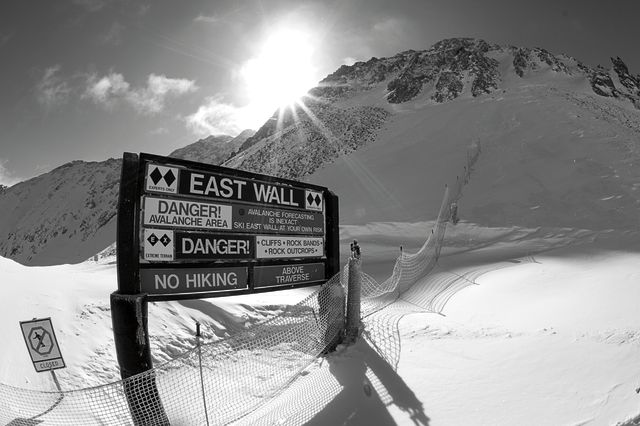
Image: Casey Day
Classic Puma Bowl
Longest Two If By Sea
Sleeper Patriot
Above-tree-line skiable acres 850
The 2006 addition of Independence Bowl to Keystone’s hike-to and cat-skiing terrain transformed the mountain. When a big storm rolls in and the wind doesn’t strip the vast Independence powder field, it holds some of the most photogenic, mesmerizing turns in the state. Especially when a snowcat is waiting at the bottom to rush you back to the top for a dose of déjà vu.
Truth is, other resorts have better hike-to or lift-served above-tree-line terrain. But no other resort in Summit offers the novelty that Keystone Adventure Tours (KAT) offers: guided snowcat skiing in three alpine bowls—Bergman, Erickson, and Independence—for $250 a day (including lunch and powder-ski rentals). On their own, Bergman and Erickson are perfectly adequate, but the trio is much stronger now than the duo ever was. Your guide will know best, but according to mountain ops manager John Ulbrich, who has worked at Keystone for twenty-five years, choice lines include Cornucopia in Erickson Bowl, where you descend through rock spires into a steep pitch toward the bottom; and P.B., a north-facing powder stash in Bergman Bowl.
Any cat-skiing run is also available to those willing to hike an extra thirty to seventy-five minutes for their turns. The longest hike brings you to one of the prime cat runs in Independence Bowl, and the closest to the peak’s 12,614-foot summit: Two If By Sea. “It does have a south face,” says Ulbrich, “but when it’s good, it’s some of the best skiing that we have at Keystone.”
Of course, there’s a reason plenty of locals are content to leave the faraway lines to the big-ticket snowcat crowds. North and South bowls, which drop off either side of an east-west ridge leading toward the summit of 12,354-foot Wapiti Peak, have long served the jonesers and diehards just fine. Start at the top of the Outback (11,980 feet) and hoof it to the Trap or Conquest to maximize your vertical on soft, north-facing snow that plunges into glades. For a classic, keep hiking a bit higher then drop into Puma Bowl.
And for those who would simply prefer to ride in a snowcat no matter the distance, (conditions permitting) you can always hop in the cat for a quick lift up Outback ridge to get to the goods in North and South bowls. It costs $5 per ride, or you can buy a 15-ride punch card pass for $50.
Arapahoe Basin
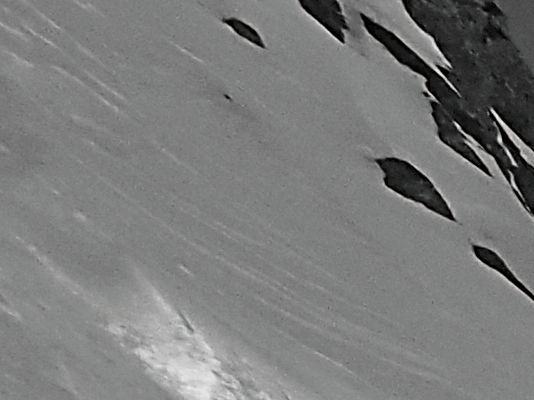
Kyle Bartsch pauses before committing to the Snorkel, an unofficial line down Arapahoe Basin’s East Wall.
Image: Andrew McWilliams
Classic Willie’s Wide
Longest Corner Chute
Sleeper Second Notch
Above-tree-line skiable acres 480
Although every resort in Summit County offers abundant terrain above tree line, the crown jewel for expert skiers is indisputable: Arapahoe Basin’s East Wall. Despite having just ninety skiable acres and often not opening until late in the season because it needs so much snow to fill in, the East Wall delivers a rare inbounds combination of steep pitch, long vertical, and technical descents. Plus, every turn above the “lower traverse” is accessed by hiking, which means it holds snow longer than the rest of A-Basin’s above-tree-line runs.
“A lot of times it’s just you and your pals, or you’re by yourself up there,” says local telemark queen Jody Thompson, who has been charging A-Basin’s steeps for twenty-four years. Thompson spends much of the winter glancing longingly at the East Wall from A-Basin’s lower chairlifts, counting the days until it opens. Some years, owing to the rocky terrain, it doesn’t open at all; in a really deep year, it could open by February; most seasons it opens in March or April. Then the fun starts.
To be fair, the East Wall is not A-Basin’s only fun alpine terrain. (Half the resort’s skiable acreage, in fact, is above tree line.) Montezuma Bowl, especially the west ridge, offers plenty of big-mountain bowl skiing. And the Cornice Run on the resort’s front side is a classic. But when the conditions come together, locals flock to the East Wall like vultures to roadkill.
Start by hiking the North Pole ridge to a series of 600-foot chutes, including North Pole proper, First Notch, and Second Notch, which requires a thirty-foot down-climb at the top. “You get a lot of bang for your buck for a ten-minute hike,” Thompson says. Then head to Willie’s Wide, a boot-pack that’s straight up and strenuous—but worth every hard-earned step. If Willie’s is tracked out, continue to the Snorkel and Corner Chute, two sheltered, 1,200-foot shafts that empty into a powder field above the Lenawee chair. Repeat until you can’t feel your legs or the mountain closes, whichever happens first.

